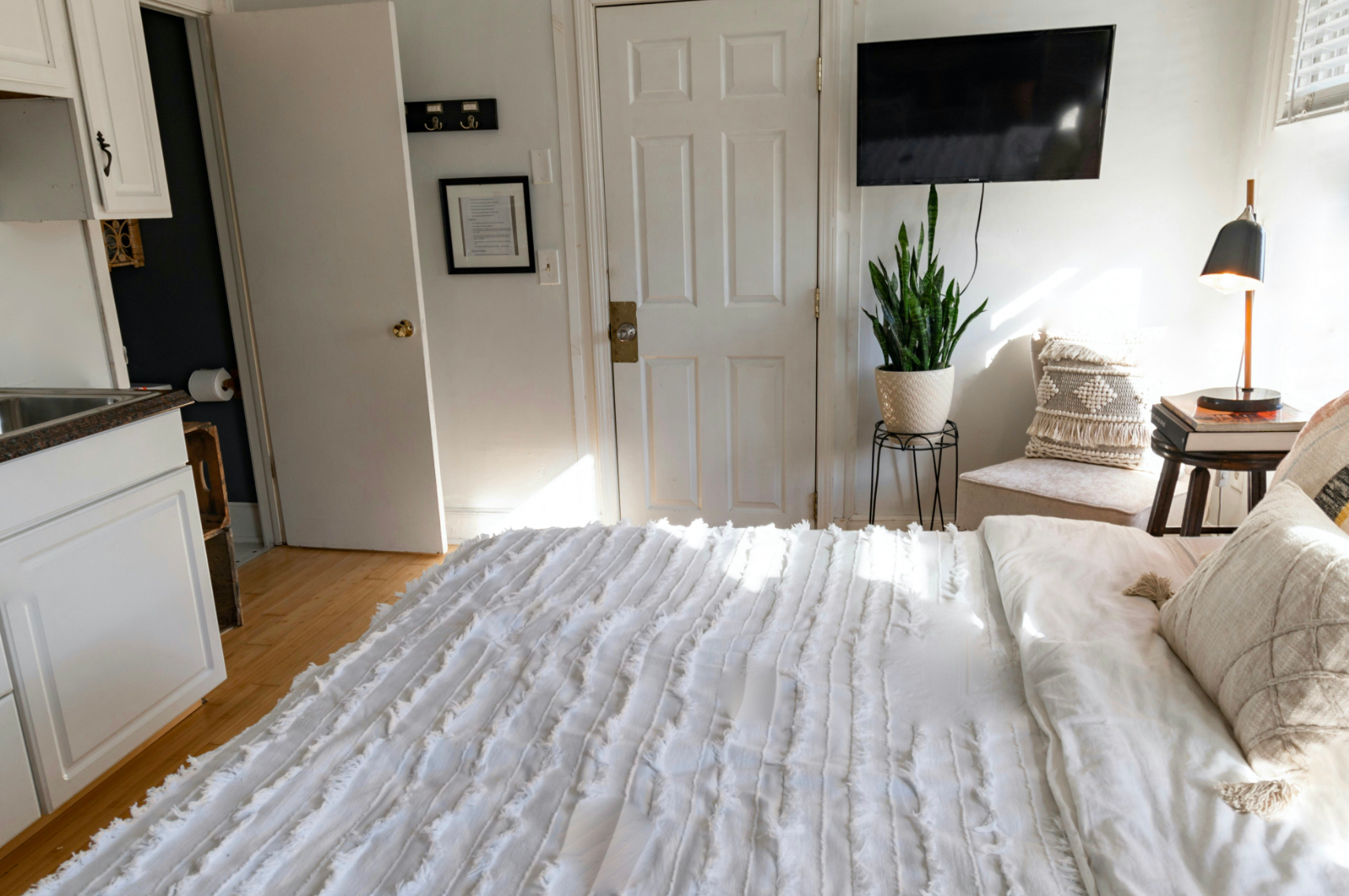In recent years, more Australians than ever are recognizing the crucial role that their living environment plays in their overall well-being. This awareness isn't just about aesthetics; it's about understanding how our surroundings affect our health, mood, and even our social interactions. Factors such as air quality, water purity, and the physical layout of our living spaces can profoundly influence our daily lives.
Environmental psychology suggests that the spaces we inhabit can either enhance or detract from our wellness. For instance, a cluttered room can increase stress levels, while a well-lit, airy space might boost our mood and productivity. This understanding has sparked a movement towards creating homes that not only look good but also promote a healthier lifestyle.
As we delve deeper into what makes a home a healthy sanctuary, we'll explore three key areas: creating mindful eating environments, fostering mental clarity through clutter-free spaces, and enhancing social interaction with thoughtful communal areas. Each of these aspects offers practical tips that you can start implementing today to transform your home into a wellness haven.
Whether you're looking to overhaul your entire home or just make some minor tweaks, the following insights will equip you with the knowledge to make informed decisions that benefit your physical and mental health. So, let's begin by examining how the very design of your kitchen can influence your eating habits and why it's crucial to your wellness journey.
Physical health through mindful eating environments
Per the Australian Bureau of Statistics, 67% of Aussie adults are overweight, a stark 63.4% increase from ten years prior. Apart from larger food quality and accessibility issues, a potential factor is the sedentary nature of a home, which may encourage mindless habits. A balanced diet doesn't just address chronic pain and decrease stress; it also sets you up for success on the scale. Because nutrition is at the core of healthy living, consider an evidence-backed weight loss program that helps you learn healthy habits rather than completely eliminating certain foods. Ideally, you should still eat the foods that make you happy, albeit more mindfully and in moderation, while creating sustainable weight loss of 0.5 to one kilogram per week. So, don't kick your favourite (but not-so-nutritious) snacks to the curb when organizing your kitchen and pantry. Keep a reasonable amount for moderate snacking so you don't feel deprived—but display healthier fare more prominently on your shelves and fridge.
Mental clarity through clutter-free spaces

We've dived into the silent consequences of living amidst disarray and how this can cause constant low-grade stress. Stress is widely known to heighten the risk of chronic health conditions like overweight, heart conditions, type 2 diabetes, and more. A messy environment can impede your decision-making ability, productivity, overall mood, eating habits, and even how well you sleep at night! But if you feel your home's gone off the deep end, take a deeper breath. Try decluttering just your bed: change the sheets, remove unwanted items, and ensure it's well-made to encourage restful sleep. Once your bed is cleared, you can move to other areas like your desk, couch, or bathroom sink. Remember our tip of wiping down surfaces with a citrus, cinnamon, and clove essential oil mix? This provides a fresh and uplifting scent that boosts and uplifts your mental energy. To maintain your clean home, declutter for just five minutes a day. You may not get every nook, but the mess won't build up to an overwhelming amount down the line.
Social interaction through communal areas and traditions

Have you ever felt isolated, even with other family members in your home? Feeling lonely doesn't just have social consequences; lonely people are associated with adverse health outcomes and a 26% increased risk of death. From 2001 to 2021, one in five Aussies consistently agreed with the statement, 'I often feel very lonely.' How your home is organized can either positively or negatively influence the interactions in it. For instance, family members often retire to their rooms and indulge in solo screen time. If possible, move furniture around to encourage a more open floor plan, which creates a sense of togetherness. Encourage group recreation by setting up your living room as a cosier space for video gaming or movie nights. By facilitating more in-person interactions—rather than sending each other messages to say it's time for dinner—you can connect with loved ones, which is a significant factor in overall wellness.
Integrating Wellness into Every Corner of Your Home
Optimizing your home for wellness is more than a trend—it's a transformational approach to living that prioritizes health and happiness. By focusing on mindful eating environments, clutter-free spaces, and vibrant social interactions, we can significantly enhance our quality of life. Each element, from the kitchen to the living room, plays a pivotal role in fostering physical health, mental clarity, and emotional well-being.
It's essential to recognize that these changes do not require massive upheaval. Small, incremental adjustments in how we organize and utilize our space can lead to profound improvements in how we feel every day. For instance, simply rearranging furniture to encourage family gatherings or setting aside a small garden space for meditation can revitalize our daily routines.
Incorporating a home saunas is another powerful way to enhance wellness within your living space. Saunas offer numerous health benefits, such as improved circulation, detoxification, and stress relief. Regular sauna sessions can help reduce muscle tension, promote relaxation, and even improve sleep quality. By integrating a sauna into your home, you create a personal retreat that supports both physical and mental well-being, making your home a true sanctuary of health.
As we've explored, our homes can also serve as the foundation for stronger social bonds. In a world where digital interactions often replace face-to-face connections, designing spaces that encourage direct interaction with family and friends is invaluable. This not only enriches our personal lives but also bolsters our communal health.
Finally, remember that optimizing your home for wellness is an ongoing journey. As our lives change and evolve, so too should our living spaces. Continually seeking ways to improve your environment will ensure that your home remains a sanctuary of health and happiness. Start with one room, or even one habit, and build from there.
We invite you to share your experiences and insights on our platform. Have you found particular strategies effective? Do you have tips for others looking to embark on this wellness journey? By sharing, we can all learn and grow together, creating healthier homes and happier lives.
In a world where wellness is crucial to happiness and stability, taking the time to tailor your home environment can have a profound impact on your life. Let's take these steps together, towards a healthier, more connected future.
